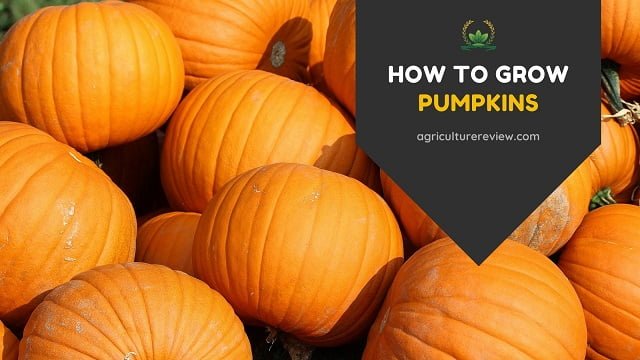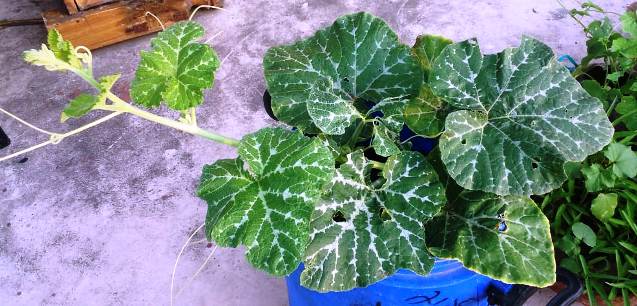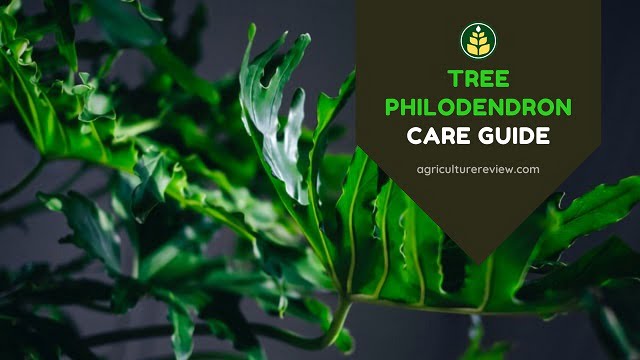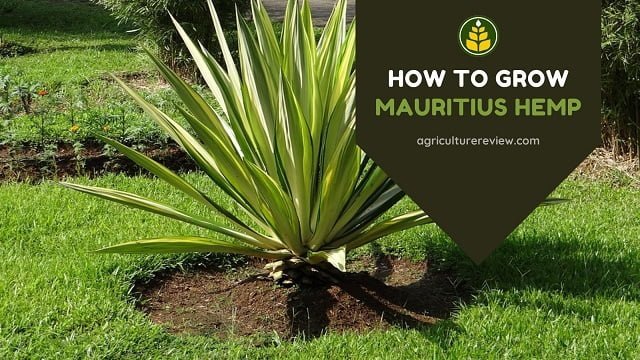This ultimate guide on how to grow pumpkins will help you in growing pumpkins in your home garden. Learn these proven yet easy steps to grow healthy and delicious pumpkins in your garden.
Table of Contents
Introduction
Pumpkins are a plump, nutritious orange vegetable and a highly nutrient-dense food. They are found to be low in calories but rich in vitamins and minerals. Pumpkins are grown all around the world for a variety of reasons ranging from agriculture purposes to commercial and ornamental sales.
Pumpkin is a great plant to grow in your home garden. It grows easily without any hassles. However, if you will practice 3g cutting in pumpkins then it can increase your crop yield up to 14 times!
Pumpkin or Cucurbita pepo is native to North America. And it is considered as one of the oldest domesticated plant. Moreover unlike other gourds such as bottle gourds, pumpkins doesn’t need any support to grow. But there are few very important points that I am going to tell you in this article.
If you follow these points very well then you are definitely going to enjoy home grown pumpkins.

How To Grow Pumpkins?
To grow any plant, you need to know growing season, potting mix, pot selection, and propagation methods. They help you to grow the plant successfully. Most of the people treat every plant with same care. But this will not help.
Every plant species have their specific requirements. And In order to grow them very well you need to fulfil those important requirements.
Growing Season
The first and the most important point is growing season. Well most of the new comers in gardening often does this mistake. A plant loves specific environmental conditions to grow. Pumpkins can not tolerate frost. That’s why avoid growing them during harsh winters.
You can grow pumpkins in plant hardiness zones 3, 4, 5, 6, 7, 8, and 9. If the average temperature is around 29 to 35 degrees Celsius, then you can start sowing seeds. You can sow seeds during early spring season as well as during late summer season.
Potting Mix
Pumpkin plant loves well drained, sandy loam soil rich in organic matter. If your garden soil is similar then you do not even need to worry about potting mix. Just add enough fertilizers add you are ready to begin.
But if your soil is heavy or clayey then you definitely need to prepare a good potting mix. Prepare potting mix with 40% garden soil + 20% river sand + 40% any organic compost. You can also mix a handful of neem cake fertilizer for good results.
Selection Of Pot
I will suggest to select a large gardener pot that has a capacity of 30 to 60 litres with depth 2 feet and diameter 2 feet. The size of the pot depends on the pumpkin varieties.
Smaller varieties need 30 to 40-liter container and large variety need 40 to 60-liter container. Ensure there is a good drainage system with at least 3 to 4 holes at the bottom. Fill the container with potting soil leaving a 2-inch distance between the soil surface and rim of the container.
Propagation
You can grow pumpkins from seedlings by purchasing well developed high-quality plants from the nursery or by seed germination. If you want to grow it from seed germination, then you should purchase good quality seeds from seed sellers or online.
You can also purchase seeds from us. For this purpose you can connect with Agriculture Review on Facebook or Instagram. Send me a message regarding purchasing seed.
How To Grow Pumpkin From Seeds?
To grow pumpkins from seeds, Soak the seeds in water for 2 days before sowing. To sow pumpkins seeds make 1-1.5 inch deep holes in the potting mix using your finger or any blunt object. Sow 3 to 5 seed per pot.
Place one seed in each hole. Keep in mind to keep the blunt end of seed towards the base of soil. Cover the holes with loose soil. Water your container well. Keep moderate soil moisture till the germination of seeds.
In Near about 7 to 14 days seed will germinate. When the seedlings have developed about the 3-4 leaf stage. Identify the healthy plant and unhealthy plants. Thin out unhealthy plants from the pot. This will help to promote growth of healthy seedlings.
You can also use germination tray or any other container to germinate pumpkin seeds.

Pumpkin Plant Care
Once you are successful in germinating pumpkin seeds, then you will need to care for your pumpkin plant. As a gardener you need to be aware about plant sunlight, watering, fertilizers, etc. requirements. This helps to get best results.
Sunlight
To get good growth of the pumpkin plant it requires good amount of sunlight. Place your pot in an area where your plant can receive at least 6 to 8 hours of daily direct sunlight. Getting good amount of sunlight will ensure good growth of branches, fruiting and its size.
Watering
Pumpkins require plenty of water and moist soil, so deep and regular watering is essential. It depends on the climate and size of the plant. When plants reach 12 inches tall, mulch the topsoil with chopped straw. Mulching helps in retaining soil moisture.
However, also take care of drainage. Waterlogging in the pot can harm your plant. I prefer watering my plant whenever the top layer of soil seems drying.
Fertilizers
After the plant is established well you can start feeding with NPK. ¼ teaspoon NPK (10:26:26/ 8:24:24/5:10:10 any combination) fertilizer every month. Use dry cow dung, 1 teaspoon once after every 15 days.
But you can also use organic manure like vermicompost, leaf manure or cow dung manure. Add 4 to 5 handful of any one of these organic manure once after every 30 days. During flowering stage you can also feed your plant with onion peel or banana peel fertilizers.
Blooming & Care
Pumpkins plant produces both male and female flowers. Female flower buds have a small pumpkins like structure attached to the bottom of the bud. Male flowers have an erect stalk in the centre of the flowers.
Stamens of male flowers contain yellow pollen. Pick up pollen from the stamen and pollinate the female flower. After one successful pollination the fruit formation in the flower starts. If pollination is not successful then the fruit dries out and falls off. When the fruit is growing give strong support below the fruit.
Pests & Diseases
In case you spot any leaf with leaf miner trail, remove the part of the leaf and throw it out. The whole leaf need not to break off. Use a general organic pesticide spray to keep pests away and promote better growth of the plant.
Avoid using neem spray-on pumpkins. Pumpkin leaves tend to burn when you have used it on them. Your plant can get affected from powdery mildew, aphids, beetles, or anthracnose. I suggest you to use yellow sticky traps. They will help to save your plant from flying pest.
Harvesting
When fruit starts yellowing or changing its colour to orange it is time to harvest. It takes 100 to 120 days for the plant to be ready for harvesting. Cut with a sharp knife and it is ready to be cooked. Enjoy the fresh harvested pumpkins from your own garden!
Health Benefits Of Pumpkin
They are found to have high nutritive values and are particularly rich in vitamin A. Pumpkins contain the antioxidants (alpha-carotene),beta- carotene, beta-cryptoxanthin, and many others, which helps to protect your cells against damage by free radicals.
They are loaded with nutrients that can boost your immune system. Pumpkins have vitamin-A, lutein, and zeaxanthin contents that may protect your eyes against sight loss, which becomes more common with age.
It has low calories with a high density of nutrients, this property may promote weight loss. Antioxidant property may lower your risk of stomach, throat, and pancreas and breast cancer.
It is a good source of potassium, vitamin-C, fibre, and antioxidants, which have been linked to heart benefits. It is high in beta-carotene, which acts as a natural sunblock. it also contains vitamins C and E as well as lutein and zeaxanthin. This property can help keep your skin strong and healthy.
Author’s Note
I guess you are now clear on how to grow pumpkins. I would like to thank Mr. Sital Sarkar for his contribution in this article. If you have any ideas, suggestions, or doubts then connect by commenting below.
You can also connect with Agriculture Review on Facebook, Instagram, and Koo.
F.A.Q. On Growing Pumpkins
1. How to grow giant pumpkins?
To grow giant pumpkins you need to select monster pumpkins variety seeds. Then after, provide good amount of fertilizers and sunlight. Remove excess flowers and concentrate on hand pollinating healthy flowers. This will promote good growth of healthy fruit size. Variety, sunlight, soil, and fertilizers are the most important factors that can result in growth of giant pumpkin.
2. Can pumpkin grow in shade?
Yes pumpkin can also grow in low light condition. But the plant and fruit size will get reduced. To overcome this situation you can use grow lights.
3. Can you grow pumpkin in a pot?
Definitely you can grow pumpkins in a pot. But for better growth of the plant select a large pot. A 30 to 60 litres capacity container is ideal for growing pumpkins. But make sure it has at least 2 to 4 drainage holes at the bottom.
4. How many pumpkin grow on a vine?
Number of pumpkins on a vine mainly depends on variety and care. On an average from a single pumpkin plant you can get 2 to 12 pumpkins. However you can also practice 3g cutting to increase yield.
5. How long does it take to grow pumpkins?
It takes near about 100 to 120 days to grow pumpkins after germination of seeds.





